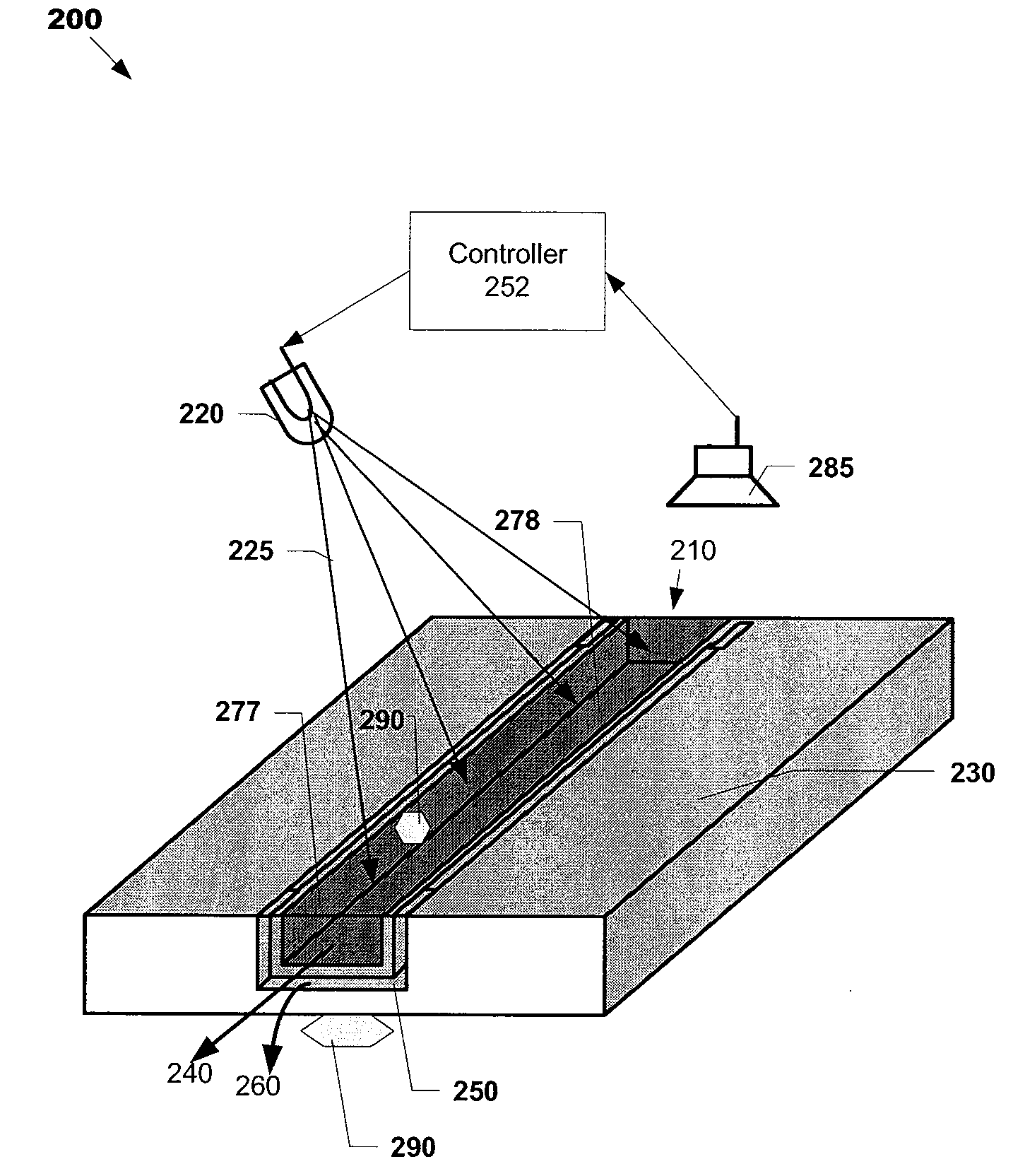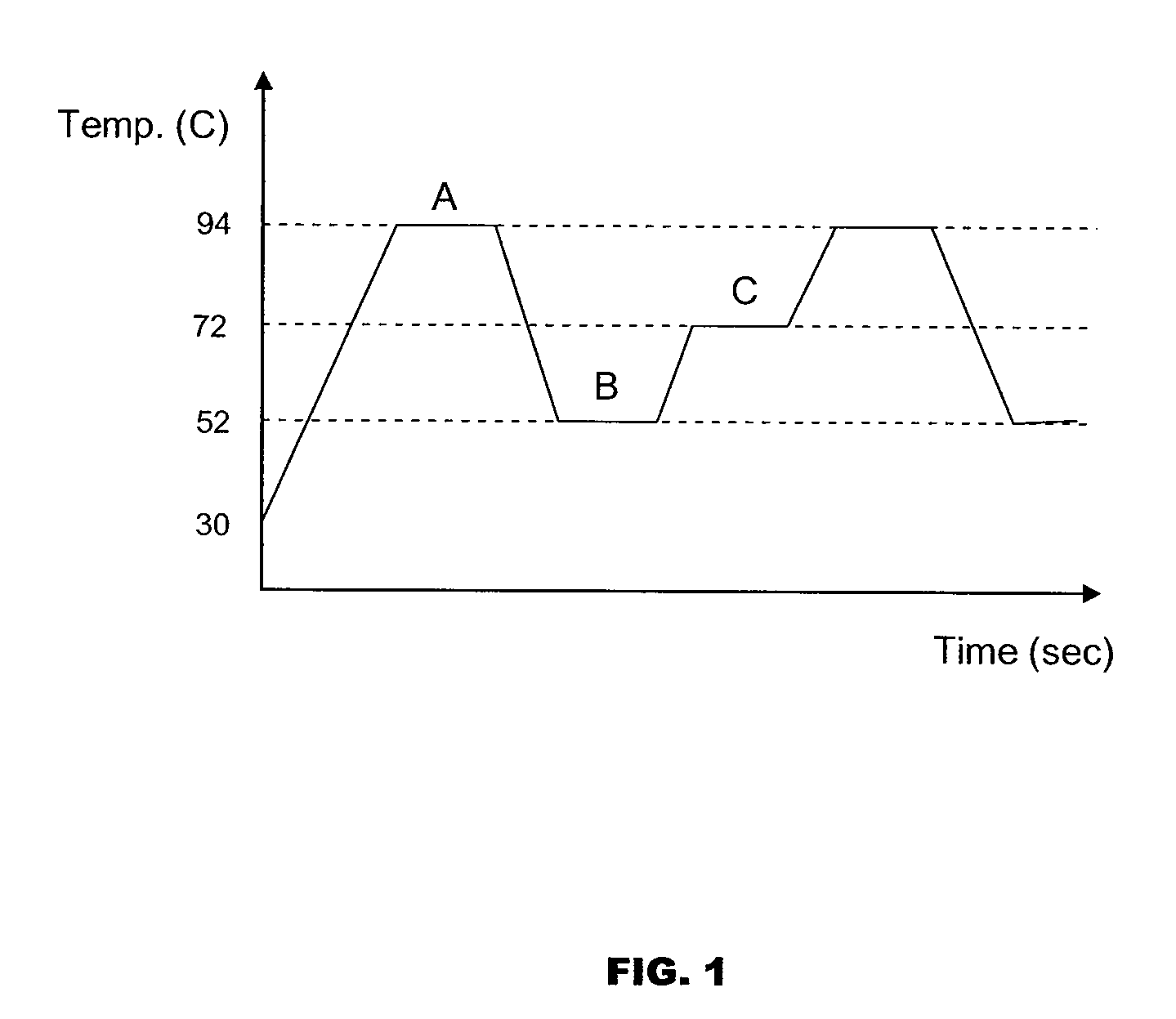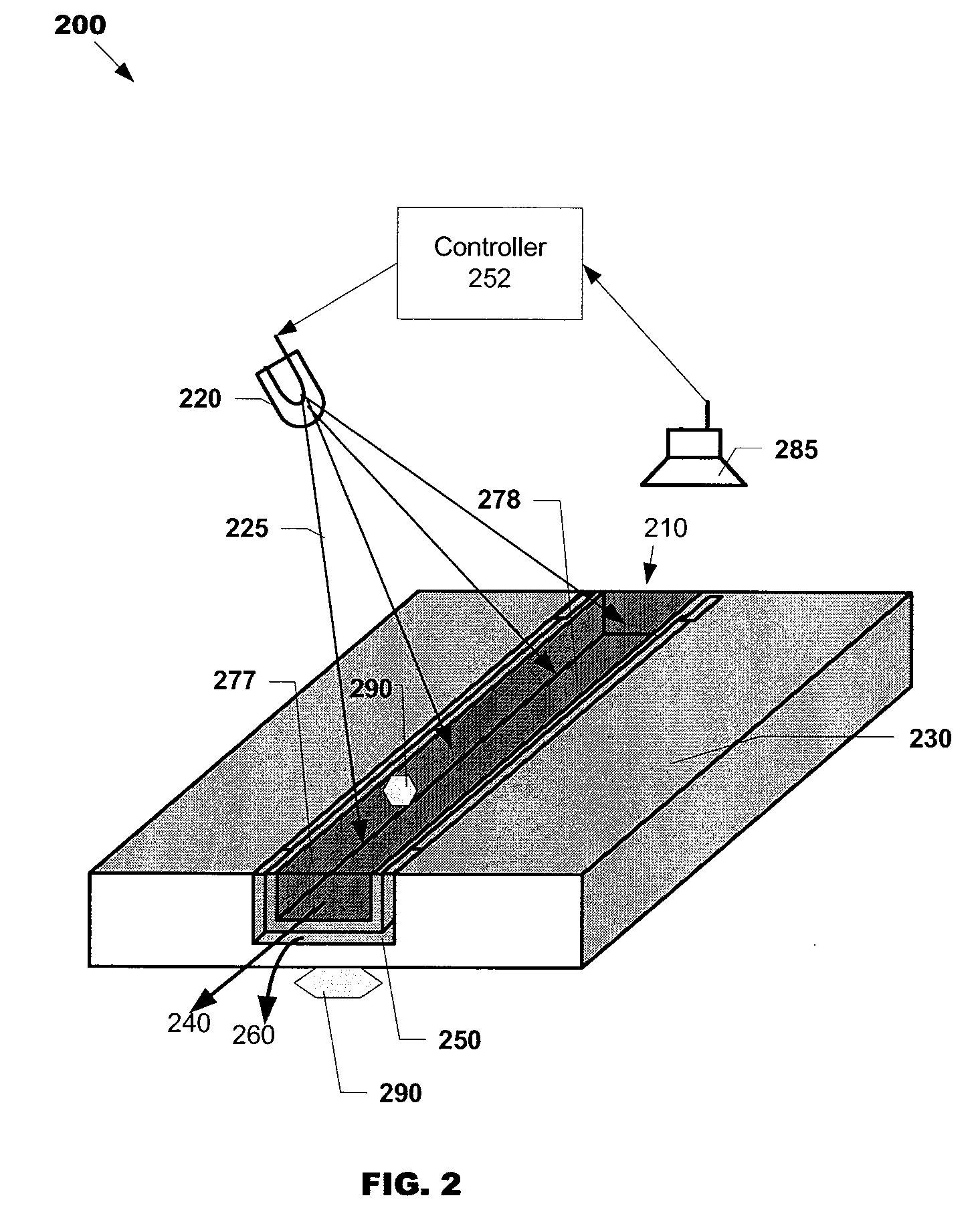System and method for rapid thermal cycling
a technology of thermal cycling and microfluidics, applied in the field of microfluidic thermal control, can solve the problems of reduced temperature stability accuracy of samples based on absorption characteristics, difficult to determine, and longer thermal cycling speeds, and achieve the effect of more rapid thermal cycling
- Summary
- Abstract
- Description
- Claims
- Application Information
AI Technical Summary
Benefits of technology
Problems solved by technology
Method used
Image
Examples
second exemplary embodiment
[0052]Referring now to FIG. 6, FIG. 6 illustrates an apparatus 600 in accordance with the second exemplary embodiment. An energy source 620 produces radiation 625a and 625b that illuminates a microfluidic chip 630 on two respective illumination portions of the microfluidic chip 630. The microfluidic chip 630 can include at least two microfluidic channels 610a and 610b, each associated with one of the two illumination portions. The microfluidic chip 630 can also optionally include heat-exchange channels 650a and 650b. In some embodiments, flows 660a and 660b may flow through channels 650a and 650b, respectively. At least a portion of the energy in the incident illumination 625a is absorbed by at least one absorption element 690a (e.g., which, as described above with reference to the first exemplary embodiment, can be a coating that covers at least a portion of a wall of channel 610a) operatively connected to the first microfluidic channel 610a. Similarly at least a portion of the ene...
third exemplary embodiment
[0056]FIG. 7 illustrates an apparatus 700 in accordance with a third exemplary embodiment. Apparatus 700 includes a microfluidic chip 730 including at least one microfluidic channel 710. In the illustrated embodiment, channel 710 is generally in the shape of a sine wave.
[0057]A temperature controller (e.g., radiation source 720 or other heater, heat-exchange channels 750a,b for containing a heat-exchange fluid 760a,b, and absorptive elements 790a,b) is configured and arranged so as to create three distinct temperature zones (zone 830a, zone 830b, and zone 830c—see FIG. 8).
[0058]Although a particular arrangement of heating / cooling elements are shown, this is only for illustration, as any kind of heaters and heat sinks may be used to create the three unique temperature zones. Accordingly, this embodiment should not be limited to any particular heating or cooling mechanism.
[0059]Preferably, the temperature in each zone is generally held constant and the temperature of any particular zo...
PUM
| Property | Measurement | Unit |
|---|---|---|
| wavelength | aaaaa | aaaaa |
| wavelength | aaaaa | aaaaa |
| wavelength | aaaaa | aaaaa |
Abstract
Description
Claims
Application Information
 Login to View More
Login to View More - R&D
- Intellectual Property
- Life Sciences
- Materials
- Tech Scout
- Unparalleled Data Quality
- Higher Quality Content
- 60% Fewer Hallucinations
Browse by: Latest US Patents, China's latest patents, Technical Efficacy Thesaurus, Application Domain, Technology Topic, Popular Technical Reports.
© 2025 PatSnap. All rights reserved.Legal|Privacy policy|Modern Slavery Act Transparency Statement|Sitemap|About US| Contact US: help@patsnap.com



